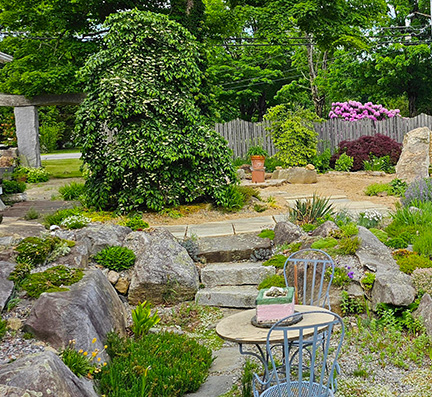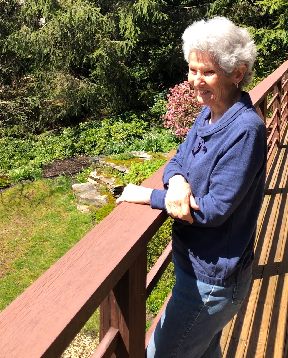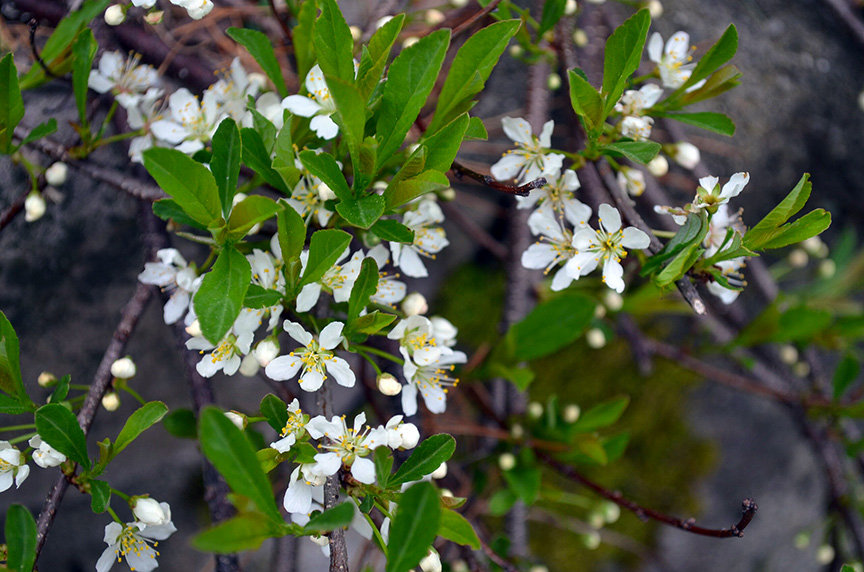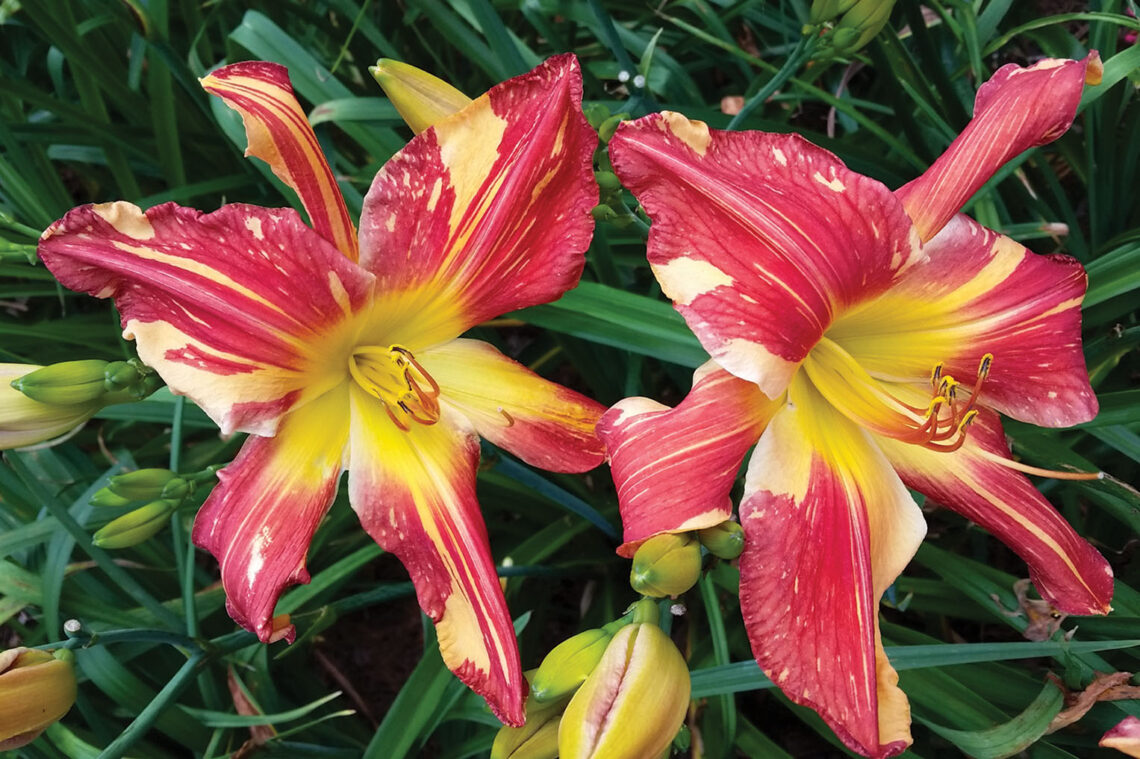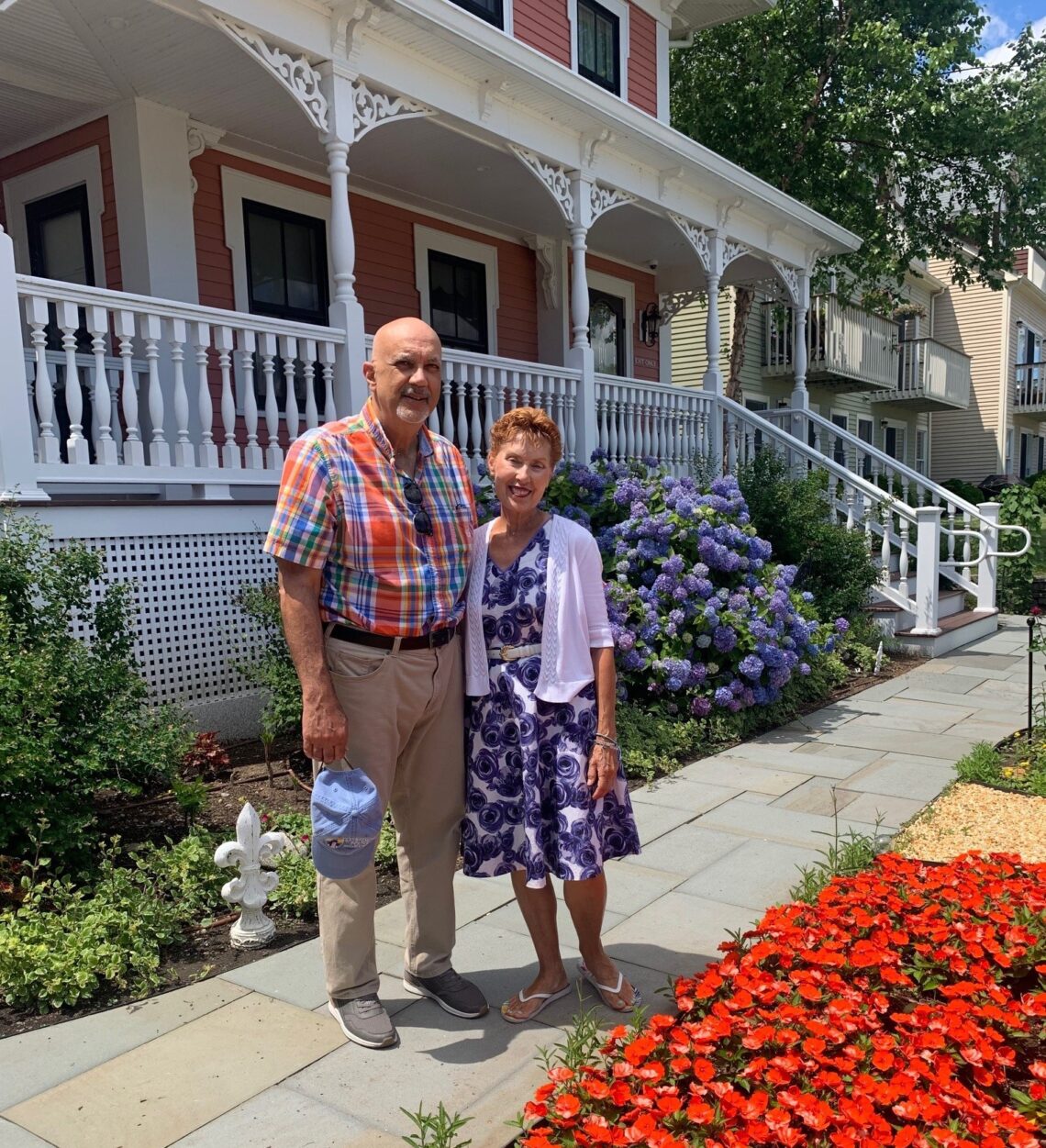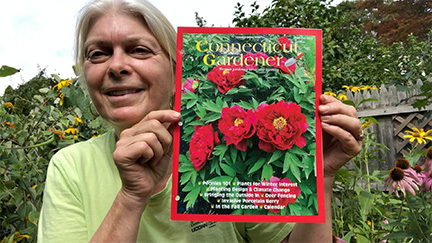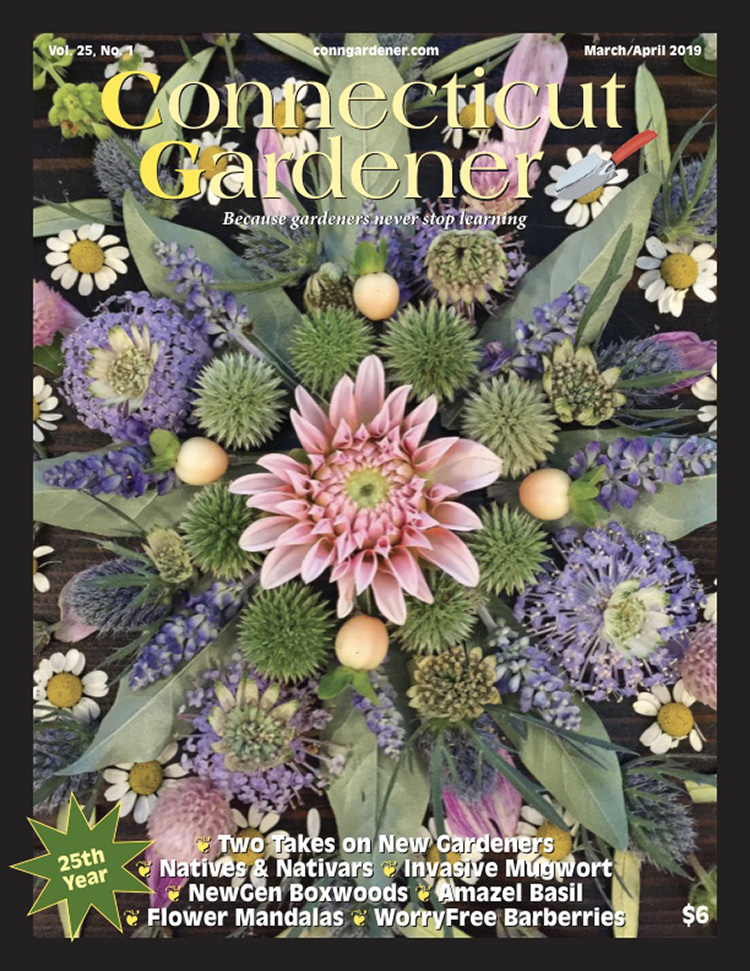By Elisabeth Zander Rock gardening focuses on growing interesting plants from around the world in one’s garden. Yes, they are natives, from worldwide alpine peaks down to bogs, woodlands and deserts. Usually small in stature, the size of the plant depends on the scale of your garden. While it is a new art form in the long history of gardening, it gained popularity here in Connecticut during the last century in the 1940s. I became enchanted by it during the late 1980s, when I lived in Watertown. At that time my house had a north-facing grassy bank that was almost dangerous to mow. The slope was quite steep. Luckily for…
-
-
Geraldine’s Garden
In the woods of Fairfield, near the Merritt Parkway, Geraldine Klein Robbenhaar has been creating a garden. Geraldine called me out of the blue in May of 2020, as we were adapting to pandemic pandemonium, and her offer of a garden tour was gratefully and immediately accepted. Yes, please! Visiting her three-acre property is not a 10-minute affair, and we lingered for several hours. She was eager to share, and I think sharing my delight at each new perspective and planting was good medicine for us both during such weird times. The gently rolling, heavily wooded landscape of this Fairfield property provides Geraldine with the basic materials to pay tribute…
-
A Native Sprawling Sand Cherry
Sand Cherry (Prunus pumila) is a deciduous shrub native to North America. In the U.S. it can be found on the East Coast from Maine to Pennsylvania. It tends to grow in sandy locations such as beaches and dunes. Prunus pumila var. depressa ‘Gus Mehlquist,’ is a sprawling variety of sand cherry that was an Arnold Selects introduction in 2022. Its name honors University of Connecticut plant breeding and biology professor Gustav Mehlquist (1906-1999). The Arnold Arboretum describes its discovery as follows: “On May 4, 1990, Harvard University research scientist David Boufford and Robert Nicholson, then Arboretum assistant plant propagator, found an extremely low-growing sprawling sand cherry (Prunus pumila var.…
-
Of Cultivars, Nativars & Varieties
By Will Rowlands We’re hearing a lot these days about “native shaming” and even “cultivar shaming.” It’s even become a meme. People are getting grief if they plant anything other than natives. Some are even catching flak if they use anything besides “straight-species,” “true native” or “wild type” plants in their gardens. It’s gotten to the point where growers are wary of using the term cultivar or nativar. Just to be clear, we are proponents of native plants, organic gardening and biodiversity and have been since we took over the magazine in 2010. We are also opposed to the use of invasive or genetically engineered plants. Even so, we find…
-
New Daylilies from Local Hybridizers
By Russ Allen You would probably never have guessed that some of the most beautiful new daylilies were created by gardeners located in our very own Southern New England area! To illustrate this, the author went on the following quest to highlight some of them for you. BackgroundDaylilies (also referred to as the “perfect perennial”) are quite amenable to hybridizing by local gardeners to create gorgeous new varieties. The performance of daylilies (such as bloom quantity and quality, multiplication rate, weather tolerance, etc.) can vary widely depending on the climate zone, so selecting daylilies that are outstanding performers in one’s geographic area is important. The QuestSince the author lives in…
-
More about the Gardens at Saybrook Point Resort & Marina
In our Winter ’22-’23 issue we featured a story about the beautiful gardens at Saybrook Point Resort & Marina and Darci Lombardo, the woman who has tended them for the last 7 years. There was no space to add any captions to the photos (we packed in as many as we could) so I promised to get some plant IDs in here for those who are interested. Darci helped identify most everything, and the plants are listed below (not latinized, for the most part, so you’ll have to do some googling if you are so inclined). Click here for a pdf of the story. Page 20: Top left, Strawberry Vanilla…
-
Anne Previews Sept/Oct 2020
-
Our March/April 2019 issue
Our March/April 2019 edition is at the printer. It’s scheduled to go into the mail on Feb. 20. For subscribers with digital access, it should be available the same day. We’ll also have plenty of copies with us at the Connecticut Flower & Garden Show in Hartford Feb. 21-24. Find us at the four corners (booth 831), our usual location — back-to-back with NE Seed. March/April 2019 features a breathtakingly illustrated story on Flower mandalas by Michael Russo of Trout Lily Farm (the cover story), and our friends and frequent contributors Lorraine Ballato and Nancy DuBrule-Clemente share their takes on the evolution and generation of a new generation of gardeners.…
